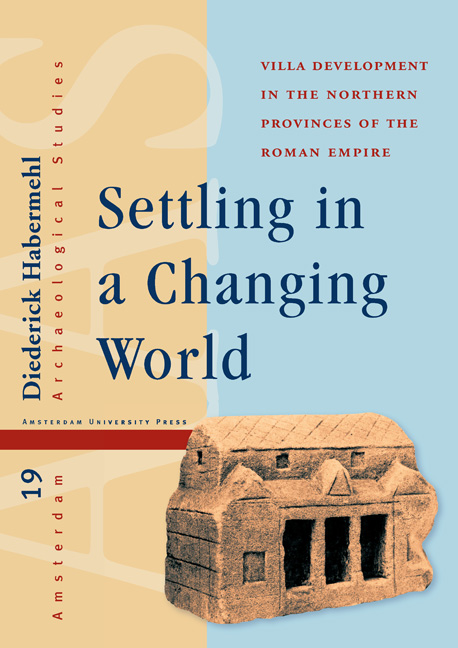Book contents
- Frontmatter
- Dedication
- Contents
- Preface
- 1 Introduction
- 2 Data and Research
- 3 Exploring Villa Development
- 4 Exploring the Social Villa. A Human Approach to Villa Development
- 5 Villa Development and the Organisation of Production
- 6 Settling in a Changing World: A Synthesis
- References
- Appendix 1 Site Catalogue
4 - Exploring the Social Villa. A Human Approach to Villa Development
Published online by Cambridge University Press: 11 December 2020
- Frontmatter
- Dedication
- Contents
- Preface
- 1 Introduction
- 2 Data and Research
- 3 Exploring Villa Development
- 4 Exploring the Social Villa. A Human Approach to Villa Development
- 5 Villa Development and the Organisation of Production
- 6 Settling in a Changing World: A Synthesis
- References
- Appendix 1 Site Catalogue
Summary
The preceding chapter explored long-term developments as well as more radical changes and transformations in both the organisation of settlement space and house building, predominantly from a spatio-morphological perspective. Space and time, both essential elements within this analysis, were approached as abstract, measurable entities. However, we should not forget that archaeology should ultimately be about people. After all, it was people who organised settlement space, built houses and broke with existing trends and traditions. In this chapter, I will therefore study villa development from a social or ‘human’ perspective, making human beings a central element in this chapter's main research question: how can we understand people changing their immediate living environments in often quite radical ways and how can we understand the marked heterogeneity within the research region? People are thus regarded as active and creative agents who actively and consciously changed their immediate living environments. These human agents were continually creating and reproducing society within the constraints of behaviour learnt and understood within that society. Material change, then, should be viewed as an ongoing social discourse that emphasises diversity and the continual reworking of social relations and identities through the material world.
Our key objective is once more to understand changes on the level of the settlement and, consequently, of local communities. However, we cannot and should not attempt to deny the relationships between these local communities and the broader outside world. As Webley argues, ‘[h]ousehold relations are not insulated from the external world, nor do they respond passively to externally imposed changes. Rather, they can themselves play an important role in maintaining or renegotiating wider social relations’.
Especially in continental studies, villa development has too often been regarded as the logical and unproblematic adoption of new settlement forms and the replacement of simple wooden traditional houses by Roman-style ones. In this chapter, I would like to take a closer look at these developments, studying the backgrounds and implications in more detail and using social theories and models in an attempt to understand more about the complex processes of change in rural settlements within the context of the developing Roman provinces.
- Type
- Chapter
- Information
- Settling in a Changing WorldVilla Development in the Northern Provinces of the Roman Empire, pp. 91 - 132Publisher: Amsterdam University PressPrint publication year: 2013



